Police have released the first images of items stolen from Dresden Castle during Monday’s dramatic heist in Germany.
The treasures represent just a fraction of the 100 or so artifacts believed to have been taken in the raid, which saw thieves smashing a glass display at the castle’s Green Vault before fleeing. But the announcement demonstrates the grandeur contained within the museum’s celebrated collection – and hints at the scale of the loss.
Among the items revealed so far are a sword, a string of pearls and collection of priceless 18th-century jewels containing thousands of individual diamonds. Almost all of the artifacts were made during the rule of Frederick Augustus III, the last Elector of Saxony (later known as Frederick Augustus I, the first king of Saxony) and were mostly created by the court jewelers Jean Jacques Pallard and Christian August Globig, along with the latter’s son August Gotthelf Globig.
Here are some of the items thus far confirmed as stolen by the Saxony police.
Diamond hat clasp
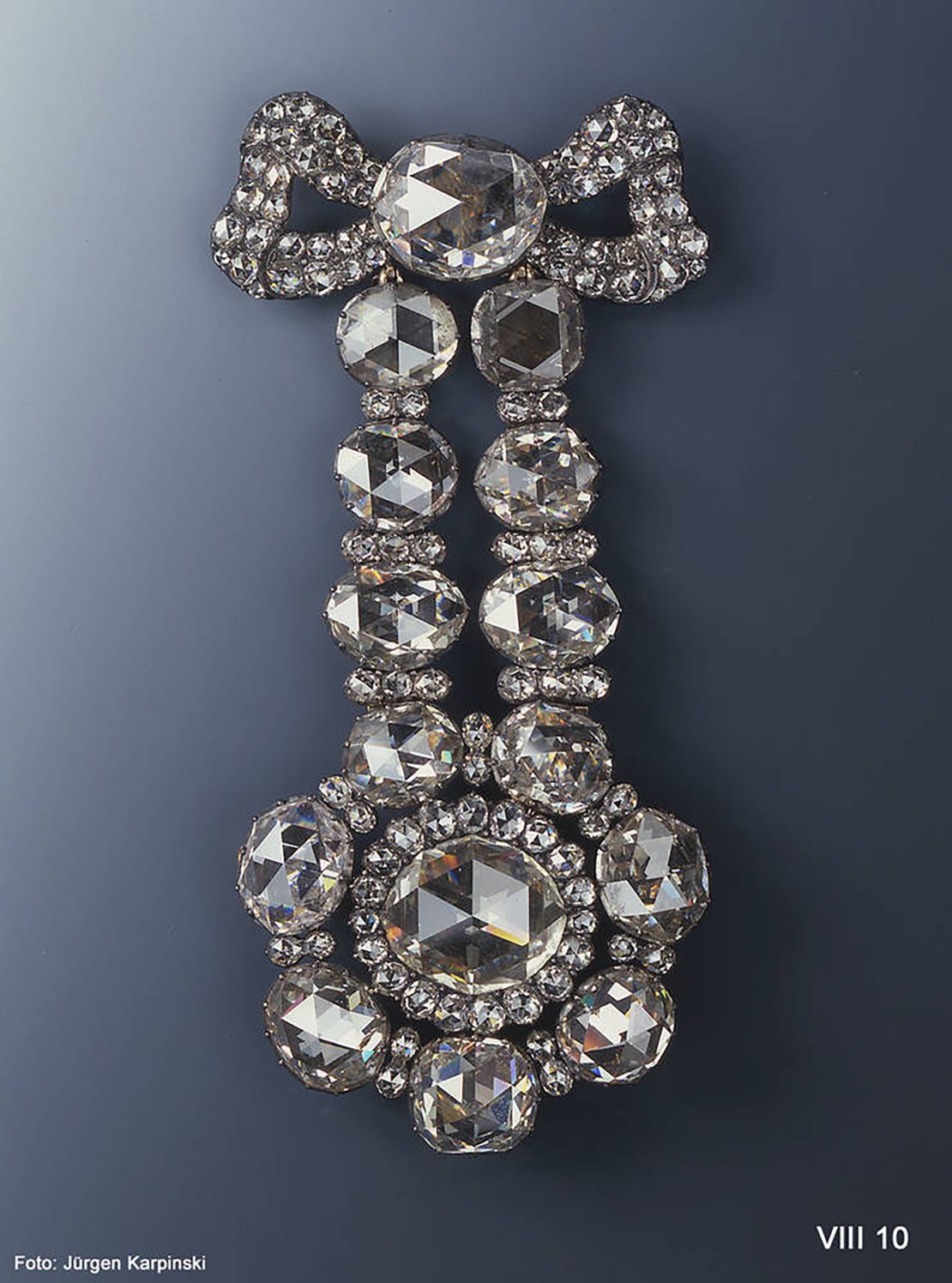
Comprised of 15 large diamonds and more than 100 small ones, this elaborate jewel would have been sewn onto the brim of a hat. The item was made in the 1780s, and was worn to galas by Frederick Augustus III. A 16-carat diamond sits at its center beneath a diamond-studded bow.
Diamond epaulette
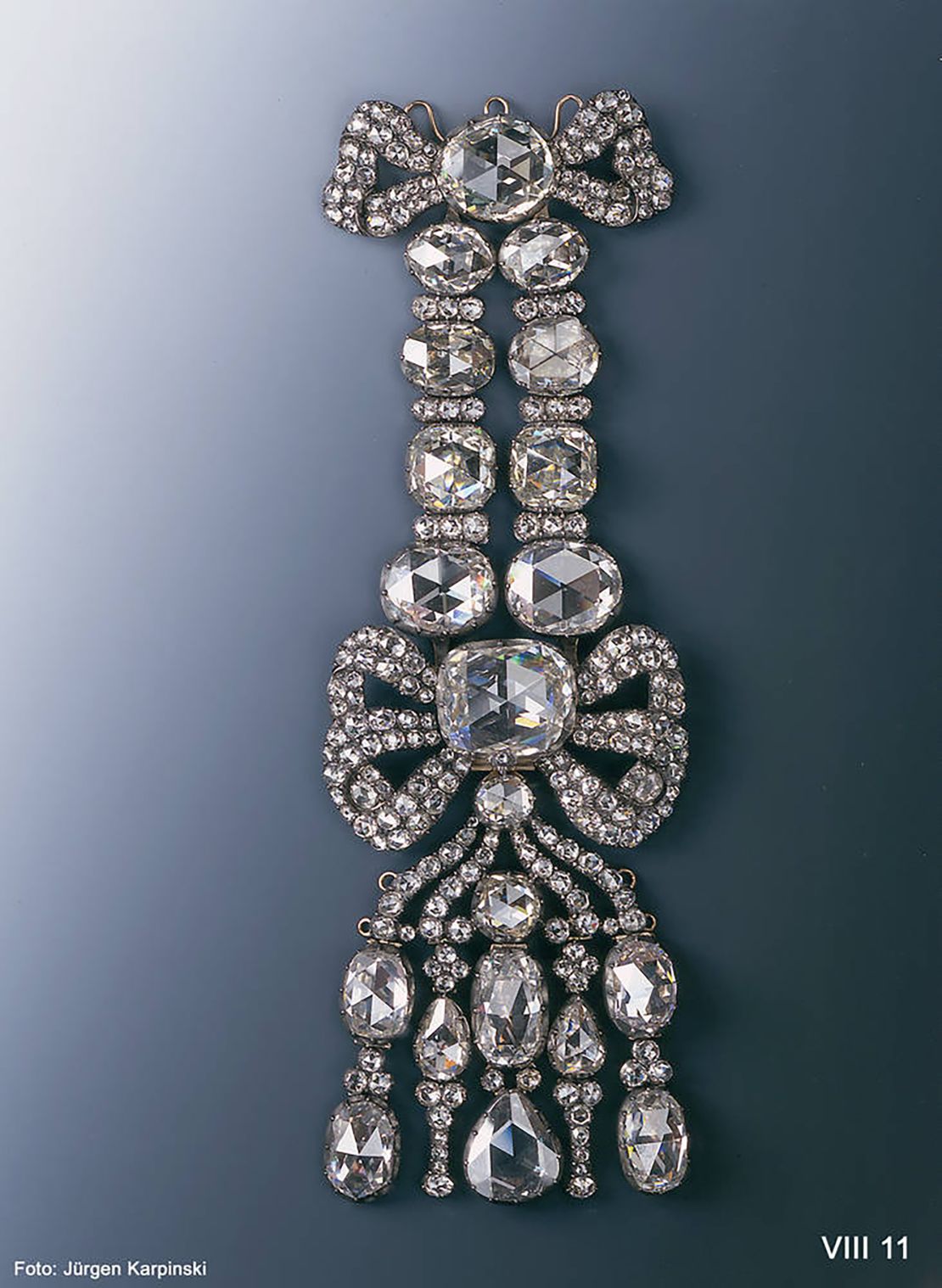
Also created for Frederick Augustus III, this epaulette – a kind of decorative shoulder piece – is made from over 230 individual diamonds. Work cutting the stones had commenced before the Seven Years’ War broke out in 1756, though the 22-centimeter-long (8.6 inches) ornament was not completed until the 1780s. A double loop at the epaulette’s center surrounds a huge rose-cut diamond.
Sword and scabbard

Measuring 96 centimeters (38 inches) long and weighing 553 grams (1.2 pounds), this sword was accompanied by a scabbard, or sheath. Together, they contain almost 800 diamonds and, according to Dresden’s state museum group, form part of a “set” along with various other jewels, including knee and shoe buckles, and an epaulette.
Order of the White Eagle jewel
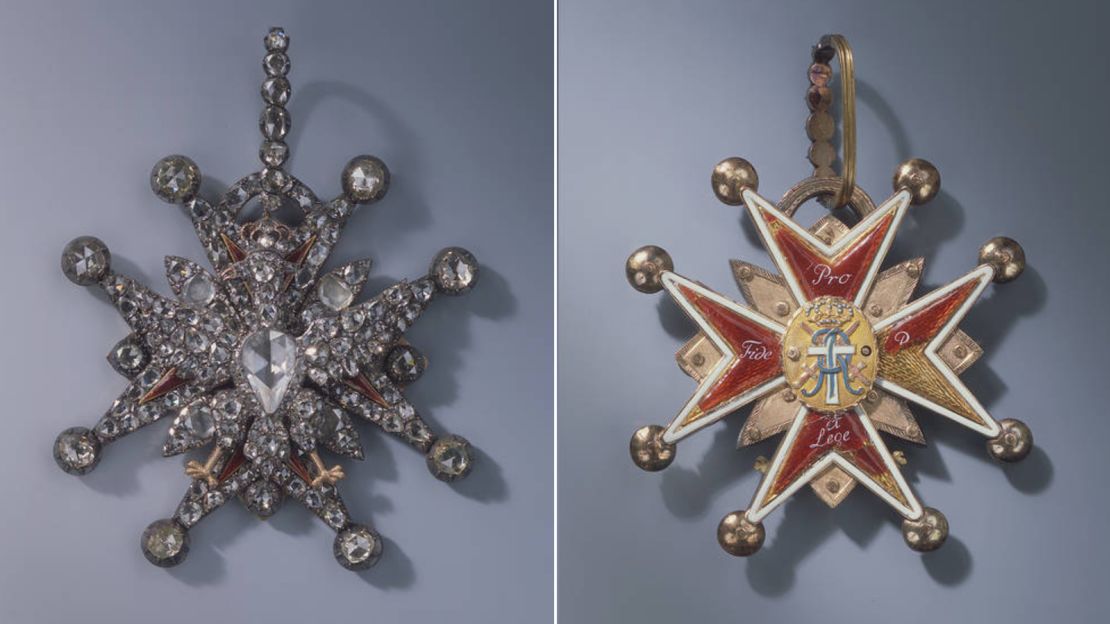
Honored as a knight of Poland’s prestigious Order of the White Eagle as a child, Frederick Augustus III later commissioned this white eagle gemstone from his court jeweler. The design was made to resemble a bird, with a large drop-shaped diamond symbolizing its body and two clawed feet seen protruding from the jewel.
Order of the White Eagle breast star

Completed in Geneva in the latter half of the 1740s, this jewel, which represents Poland’s Order of the White Eagle, was the work of Swiss jeweler and renowned diamond-cutter Jean Jacques Pallard. The item takes the form of an eight-pointed star, with a 20-carat diamond at its center and a Maltese cross made from red rubies.
Bow-shaped brooch
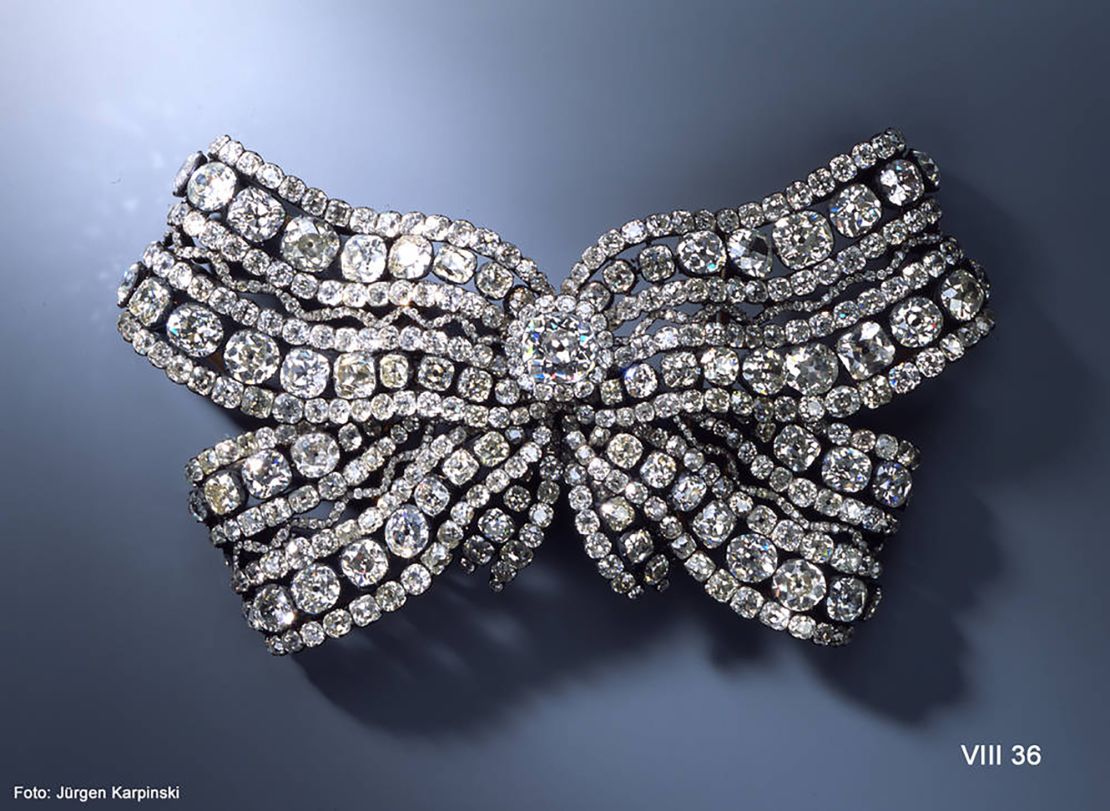
This type of decorative bow was a popular motif in 18th-century jewelry and would have been worn below the neckline by women of the court. The one taken from Dresden’s Green Vault on Monday was produced for the Elector’s wife, Amalie, and was likely made to mark the birth of the pair’s daughter, Princess Maria Augusta of Saxony, in 1782. The jewel contains more than 660 individual diamonds with a combined weight of 614 carats.
Palmette-shaped trinket
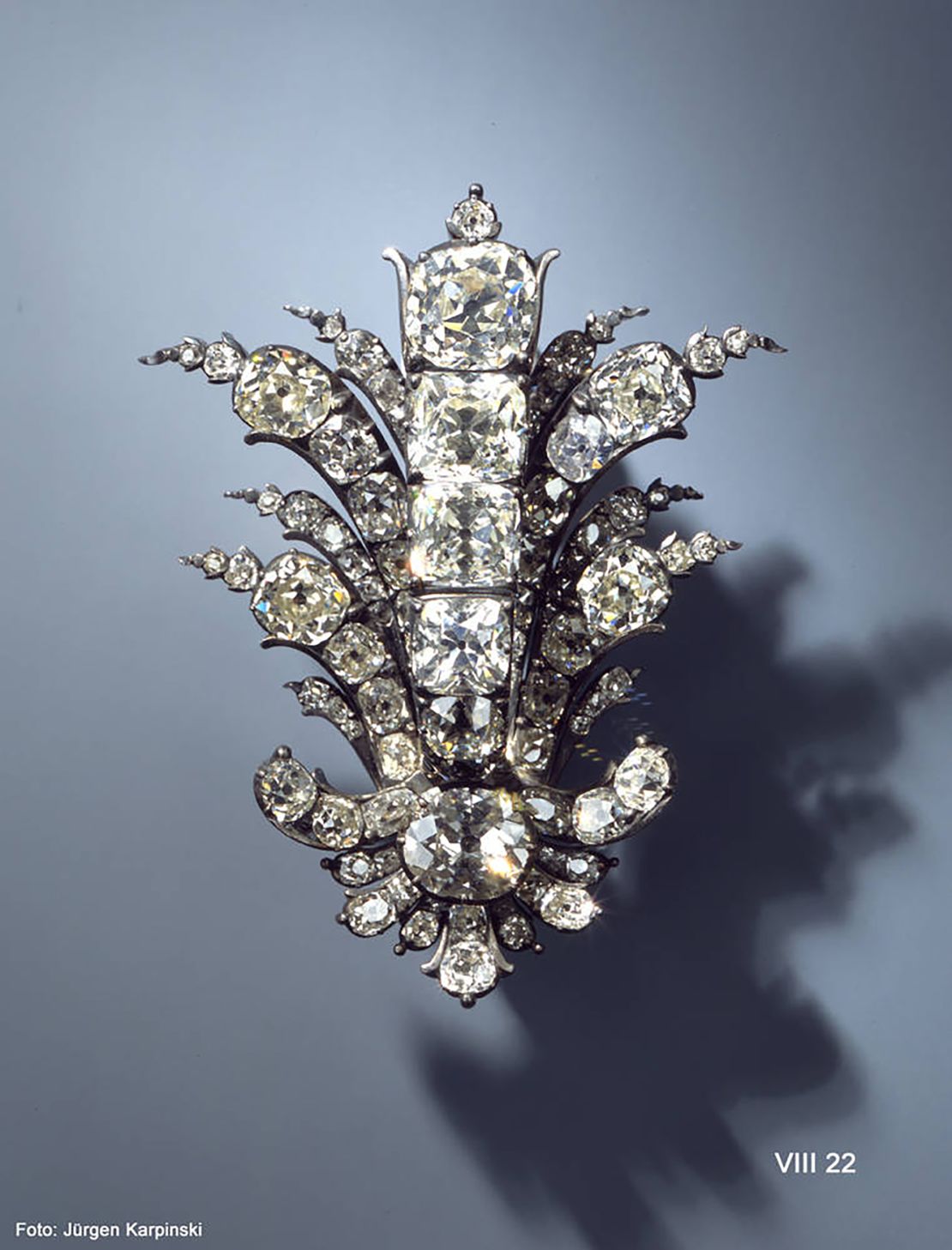
This item was originally used as a slider through which a ribbon was pulled to display the Order of the Golden Fleece, founded to defend the Roman Catholic faith. The diamonds have been arranged as a palmette, a motif that resembles the fanned-out leaves of a palm tree.
String of pearls
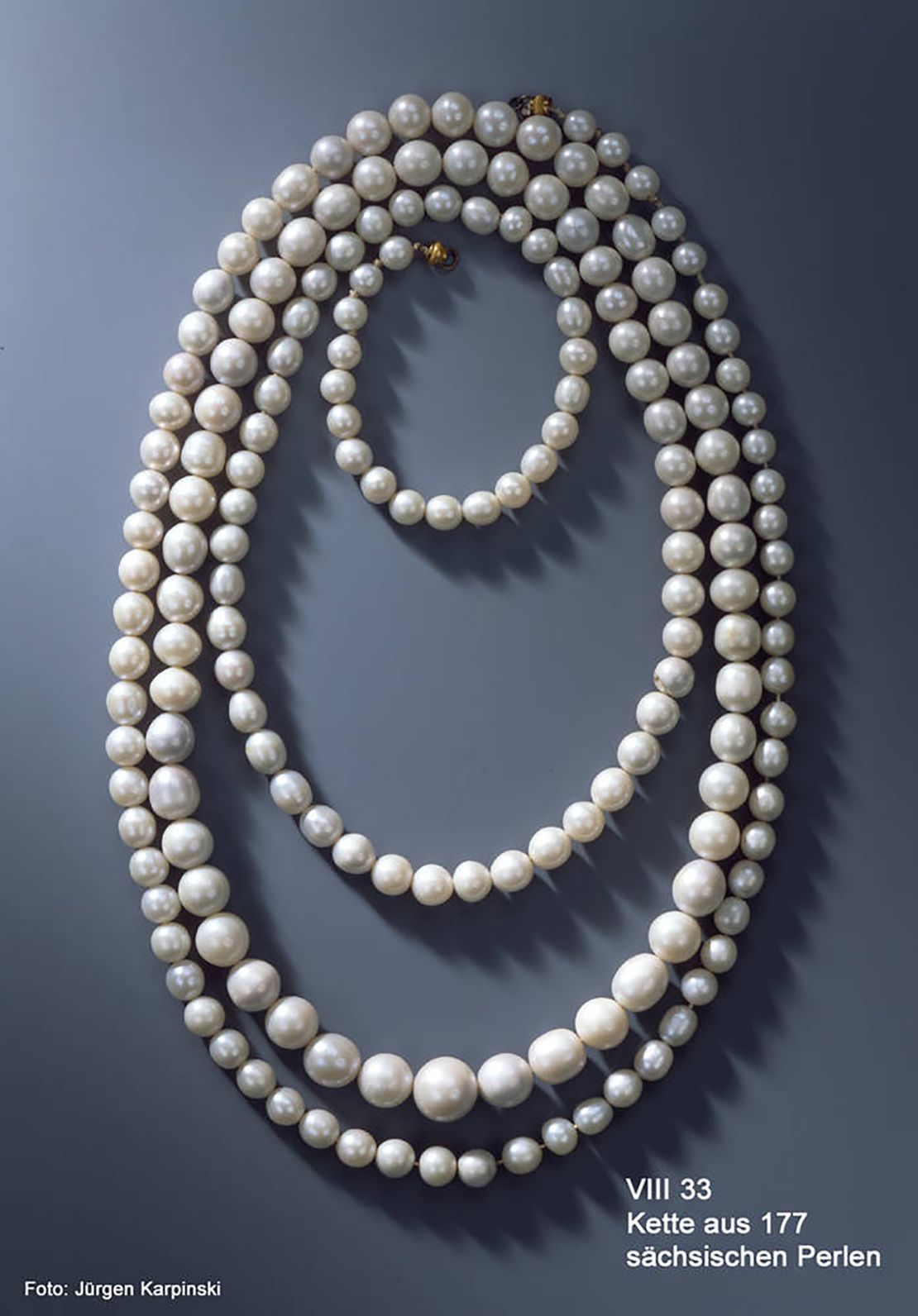
The 177 pearls in this necklace range in size from 6.5 millimeters (0.26 inches) to 12.9 millimeters (0.51 inches). The pearls were individually discovered sometime before 1734, but were only strung together into a single necklace between 1927 and 1937.


















